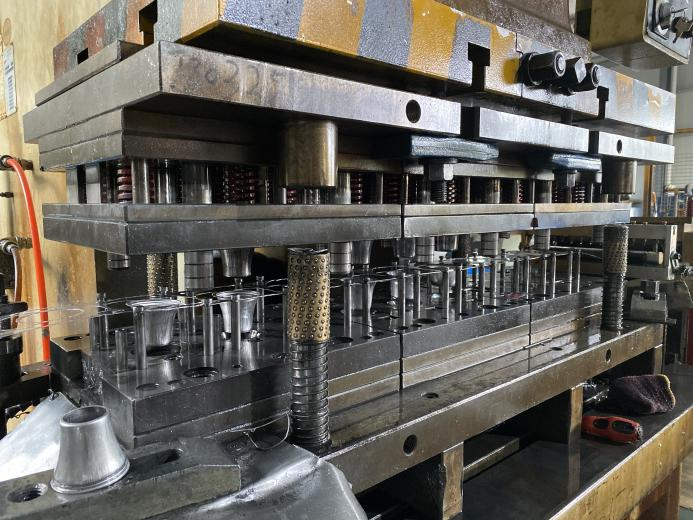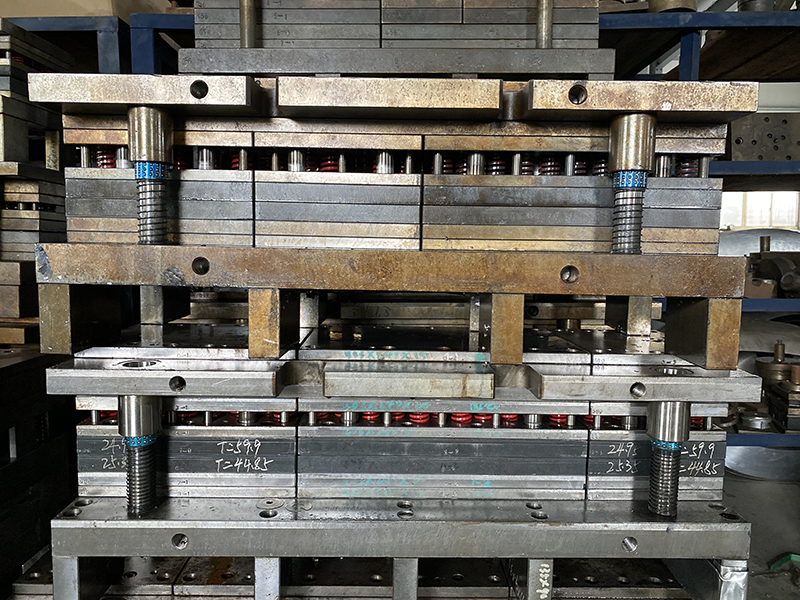In the field of sheet metal processing, stamping dies are a key tool used to process metal sheets into required shapes and sizes. Stamping mold making is a precise process that involves designing, manufacturing and debugging various molds to ensure high-quality sheet metal parts production.


1. Material selection: Selecting the appropriate material is crucial for the production of stamping molds. Common mold materials include tool steel, carbide and high-speed steel. The selection of materials should take into account factors such as the environment in which the mold will be used, the required hardness and wear resistance.
2. Manufacturing: Manufacturing stamping molds requires the use of advanced processing equipment and processes. This includes CNC machine tools, EDM machines, wire cutting machines, etc. Through precision processing and assembly, each component of the mold can achieve a high degree of accuracy and stability.
3. Debugging and optimization: After manufacturing is completed, the stamping mold needs to be debugged and optimized. This includes installing the mold, adjusting the working parameters of the mold and checking the processing effect of the mold. Through continuous debugging and optimization, the stability and production efficiency of the mold can be ensured.
There are some differences between stamping molds, injection molds and die-casting molds, which are mainly reflected in the following aspects:
1. Processing materials: Stamping molds are mainly used to process metal sheets, while injection molds and die-casting molds are used to process plastic and metal liquid materials.
2. Processing method: Stamping molds process metal sheets into the required shape through impact and pressure, while injection molds and die-casting molds inject materials into the molds through injection molding and die-casting to form the required products.
3. Design and manufacturing complexity: The design and manufacturing of stamping molds are relatively complex, and factors such as the strength of the material, the structure of the mold, and the processing technology need to be taken into consideration. The design and manufacturing of injection molds and die-casting molds are also complex, but compared to stamping molds, more emphasis is placed on runner design and material meltability.
Stamping mold making is an indispensable part of sheet metal processing. Through precision design and manufacturing, stamping dies enable efficient, high-quality sheet metal production. Compared with injection molds and die-casting molds, stamping molds have some differences in processing materials, processing methods, and design and manufacturing complexity.
Tripath international has the ability to provide mold manufacturing for customers' sheet metal products, welcome to contact us for more information.

Let’s talk! We’ll provide the perfect solution for you!
-
 Tripath International is a Canadian company with offices and manufacturing facilities in Canada and China to provide global-scale offerings in Industrial Design, Engineering, Supply Chain, and Manufacturing services, and the ability to convert your concepts into volume production.
Tripath International is a Canadian company with offices and manufacturing facilities in Canada and China to provide global-scale offerings in Industrial Design, Engineering, Supply Chain, and Manufacturing services, and the ability to convert your concepts into volume production. - Core services — PCBA Design & Manufacturing — Product Manufacturing — Product Structure Design — Plastic & Metal 3D Model Printing — Mold Design — Mold Manufacture — Surface Finishing — Testing
- Technology — PCBA Design And Manufacture — Plastic Injection Molding — Plastic Extrusion — Aluminum Die Casting — Laser Cutting And Welding — Mold Processing — Surface Finishing Technology
- Testing — Product dimension test — Product Rohs environmental test — Flame retardant test — Surface roughness test — Tensile strength test — Metal element test — Wear resistance test — Hardness test — Salt spray test — Low & high temperature aging test — Water proof test — Battery cycle test — Temperature rise test
- Copyright © 2025 Tripath International Inc. All Rights Reserved.
- Design By BONTOP
